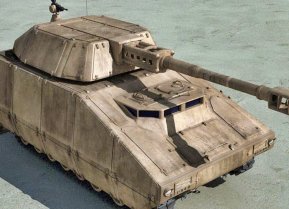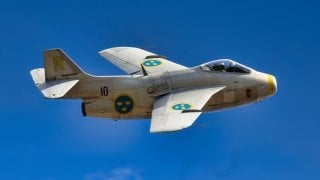Saab 29: The Spectacular 'Flying Barrell' Was Built For a Russia War
The first swept-wing fighter built in Western Europe and a child of the Cold War, the Saab 29, sometimes also referred to as the J29, fittingly earned the moniker “Tunnan” or “Barrel.” Designed in the late 1940s, it was the second turbojet-powered combat aircraft developed in Sweden, after the Saab 21R.
Indeed, the Saab 29 was no F-35 or F-22, but Sweden did build an early Cold War fighter that could take on Russia if it had to. Luckily, World War III never broke out, but we can still marvel at this fantastic plane for sure.
Meet the Saab 29
The first swept-wing fighter to be built in Western Europe and clearly a child of the Cold War, the Saab 29, sometimes also referred to as the J29, fittingly earned the moniker “Tunnan” or “Barrel.” Designed in the late 1940s, it was the second turbojet-powered combat aircraft to be developed in Sweden, after the Saab 21R.
The availability of the British Ghost turbojet enabled noted Swedish aviation pioneer Lars Brising and his design team to raise their sights and go for higher performance while employing a swept wing – with a wing layout that swept 25 degrees rearward – in the new aircraft. The first-generation jet fighter was a single-seat, single-engine aircraft with a single central air take placed at the nose and a bubble cockpit.
Sweden had relied on World War II German studies involving the swept wings, and it is easy to see the influence of the Luftwaffe’s Messerschmitt M3 P1101 project.
The team hit few snags, and the design moved forward quickly. Pilots found the Saab 29 to be fast and agile, with its rate of roll and turn radius each considered outstanding. The pilots also coped reasonably well with the narrow-track landing gear.
The Saab 29 entered service in 1951 and was well suited to serving in both fighter and fighter-bomber roles. It remained in operation until the early 1970s, and during those two decades was regularly updated, which only improved its performance. A total of 661 Saab J29 Tunnans were delivered, and many of the 308 B, D and E models were upgraded to the J29F standards.
Initially equipped with one Svenska Flygomotor RM2 (de Havilland Ghost) centrifugal turbojet, the early aircraft models could still reach 659 mph, while the Tunnan had an initial climb of 7,500 feet/minute, with a service ceiling of 45,000 feet and a range of 810 miles. The final variant, the J29F model was equipped with a Svenska Flygmotor RM2B with an afterburner, which increased the aircraft’s rate of climb, ceiling and range.
The Saab 29 was armed with four 20mm Swedish Hispano MkV under forward fuselage cannons, and equipped with eight inner hardpoints for rocket/missile pylons, and two outer hardpoints for drop tanks or incendiary bombs.
Combat Operations in Africa
Unlike many of Sweden’s Cold War aircraft that never saw actual combat, the Saab J29 Tunnan was among the fighter-bombers to see service with the United Nations (UN) peace keeping forces – the UN ONUC (“Organisation des Nations Unies au Congo”) – in the former Belgian Congo from 1961 to 1964.
The action marked the first and last exposure to combat for the J29, and while the jungle terrain of Central Africa differed greatly from Scandinavia, the Flying Barrel was used effectively to strike at enemy ground targets, providing both cannon fire and rockets with no recorded losses. Interestingly, following the UN operations, the aircraft deployed to Congo were scrapped rather than being relocated back to Sweden.
Today, just three Tunnans – in their J29F configurations – remain. One that was in service with the Austrian Air Force is on display at the Museum of Military History in Vienna, while another is at the French Musée de l’Air located at the former Paris–Le Bourget Airport, and the third is at the Swedish Cold War “ Aeroseum” in Göteborg.
Expert Biography
Peter Suciu is a Michigan-based writer who has contributed to more than four dozen magazines, newspapers, and websites with over 3,000 published pieces over a twenty-year career in journalism. He regularly writes about military hardware, firearms history, cybersecurity, and international affairs. Peter is also a Contributing Writer for Forbes.


